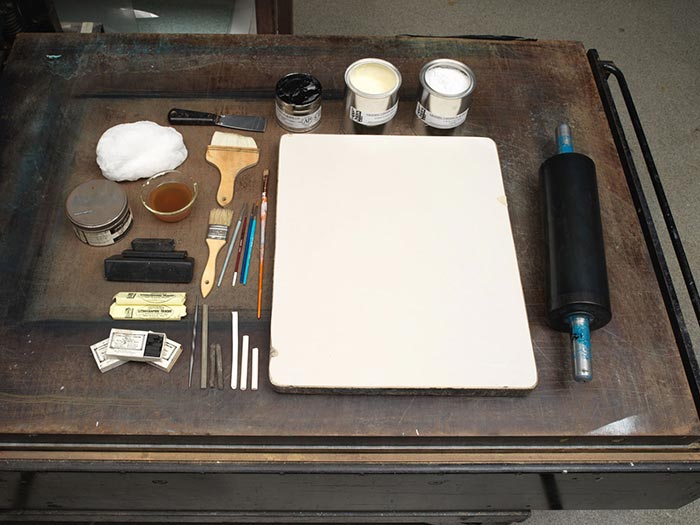The Skating Carnival
Publisher Currier & Ives American
Not on view
This rare print depicts five ice skaters with very large heads. At the lower center, a young man (dressed in a red pullover sweater and green pants) howls after falling face down; his arms are outstretched on the ice, while his feet are raised into the air. At the lower left, a grinning boy (in a blue outfit) skates away from the prone youth. At the upper left, a Black (African-American) skater kicks his left leg into the air; he wears a blue outfit, and a red cap with an upturned, yellow front flap. At the upper center, a well-dressed couple skates together: the woman is dressed in a white fur-trimmed blue coat, a red ruffled skirt, and a fur-trimmed green hat, while the man wears a blue double-breasted jacket, a red kerchief, and a black hat. At the right, a jolly man smiles as he skates; he is dressed in a black top hat, a blue suit, and a striped scarf (in red, blue, green and white colors). The title is imprinted in the bottom margin.
Nathaniel Currier, whose successful New York-based lithography firm began in 1835, produced thousands of prints in various sizes that together create a vivid panorama of mid-to-late nineteenth century American life and its history. People eagerly acquired such lithographs featuring picturesque scenery, rural and city views, ships, railroads, portraits, hunting and fishing scenes, domestic life and numerous other subjects, as an inexpensive way to decorate their homes or business establishments. As the firm expanded, Nathaniel included his younger brother Charles in the business. In 1857, James Merritt Ives (the firm's accountant since 1852 and Charles's brother-in-law) was made a business partner; subsequently renamed Currier & Ives, the firm continued until 1907.
The late nineteenth-century Darktown prints by Currier & Ives depict racist stereotypes that are offensive and disturbing.The Metropolitan Museum of Art preserves such works to shed light on their historical context and to enable the study and evaluation of racism.
In this print, a caricatured, wide-eyed Black (African American) man has wrapped his arms and legs around the smokestack of a train engine (the locomotive --in a cropped side view--heads from right to left). A large bicycle wheel loops around the man's legs-- evidence that he had been riding a high-wheeled bicycle and collided into the train. The ttle and caption --imprinted in bottom margin-- imply that the accident has knocked the man's head so severely that instead of "seeing stars," he says --in his crazy daze-- that he has "struck a comet."
Nathaniel Currier, whose successful New York-based lithography firm began in 1835, produced thousands of prints in various sizes that together create a vivid panorama of mid-to-late nineteenth century American life and its history. People eagerly acquired such lithographs featuring picturesque scenery, rural and city views, ships, railroads, portraits, hunting and fishing scenes, domestic life and numerous other subjects, as an inexpensive way to decorate their homes or business establishments. As the firm expanded, Nathaniel included his younger brother Charles in the business. In 1857, James Merritt Ives (the firm's accountant since 1852 and Charles's brother-in-law) was made a business partner; subsequently renamed Currier & Ives, the firm continued until 1907.

